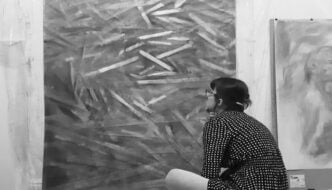Rubens and His Legacy: from Van Dyck to Cezanne
February 16, 2015
You can now visit a very interesting and beautiful selection of Rubens’ paintings at the Royal Academy of Arts in London. Peter Paul Rubens is best known for his sensual portraits of women. His paintings of human anatomy made him so famous in his time, that he earned the nickname “The Homer of painting”. Rubens’ paintings represent a story and the characters are so different from one another that the public has to take a few moments to admire the work in all its complexity.
Rubens started a tendency in art that later on was copied by several well-known painters. His influence affected diverse European countries for different reasons; in Spain his religious paintings were very valued and appreciated and, later on, painters like El Greco tried to imitate his style.
In France, the sensuality of his figures charmed painters like Cézanne, while in Germany, the powerful war images were the ones that impacted the most.The exhibition is divided into six categories: Poetry, Elegance, Power, Compassion, Violence and Lust and it includes not only Rubens’ art pieces, but also some of the artwork of the painters that were influenced by his art.
The first room, Poetry, shows Rubens’ bucolic landscapes. You can see different countryside paintings and you can’t help but think that life was quieter and easier back then. These landscapes show the effort Rubens made to reflect the different colours of the weather in his paintings: storms, sunsets… “Landscape with a Rainbow” shows this reflection, where you can see how he played with the use of light. One of the main pieces of this exhibition is “The Garden of Love”, a gigantic painting that shows the celebration of love between elegant characters belonging to Rubens’ time. In this piece of art, there are several people surrounded by little cherubim who fly among them spreading love. There’s another mythological element in this canvas, as the fountain near where these lovers are sitting has a sculpture of Venus, the goddess of love. This piece reflects happiness and is rich with details.
The second room, Elegance, shows a collection of portraits of different members of the aristocracy. These pieces are full of rich colour and textures, showing the public the families’ lifestyle of luxury and abundance. The paintings are so real that some of them seem to show us people we could easily spot on the street today. In this room we can also see another famous painting, “Self-Portrait with a Straw Hat” by Elisabeth-Louise Vigée-Lebrun who was inspired by Rubens’ “Le Chapeu de Paille”, a portrait of his wife.
The third room, Power, presents the most noble characters back in his time. Rubens earned a good reputation for fame and prestige as a painter and he was asked to paint monarchs and princes from different European countries.
His mixture of mythology and politics was very well considered and later on was imitated by other painters who used it as a propaganda technique.The fourth room, Compassion, has mainly paintings with religious themes. One of my favourite pieces in this exhibition was “Christ on the Straw” exhibited in this room. In this triptych, we see three different moments in Jesus’ life; on the left side we see when he was a little boy, cuddled gently by his Mother, the Virgin Mary, while on the central part we see him dead and surrounded by Virgin Mary, Saint John and Saint Peter after he was taken down from the cross. Finally on the right side, we see Saint John looking up to an eagle, which is the animal associated with him.
In the fifth room, Violence, we can see how Rubens was a real master painting human bodies in tense and violent moments. You can see the emotions on the protagonists’ faces, and the expressions and realism will leave you speechless. There’s one central art piece “Tiger, Lion and Leopard Hunt” which is imposing and majestic, not only for its gigantic dimensions (256x324cm) but for the complexity of its composition: the central figure is falling off a horse while he’s brutally assaulted by a tiger; there’s anger and you can see the tension on the faces of the other men in the canvas.
[Peter Paul Rubens, Tiger, Lion, and Leopard Hunt, courtesy of polyvore.com]
The sixth room, Lust, is probably the one that features one of the subjects Rubens felt more comfortable with; women’s anatomy and sensuality. In this room we can see women presented in different scenarios, but mostly erotic ones, as they are depicted half naked or completely nude. People feel like “voyeurs” or intruders into these women’s lives as most of them are not looking into the eyes of the public… There are many mythological references as in “Pan and Syrinx” that presents the faun Pan who’s in love with the nymph Syrinx and is lusting over her. We can see her trying to escape from him and the story tells us she will turn into hollow water reeds to avoid Pan’s relentless pursuit. Rubens’ love for painting women’s bodies, is perhaps one of the most controversial and famous features of his paintings. One of his most famous work is “The Three Graces” which features three Greek Goddesses dancing together naked (not featured in this exhibition).
There’s a last room called “La Peregrina: Looking to Rubens” and there you can see contemporary pieces by artists influenced by Rubens. From the use of colour, to references and Rubens’ favourite themes (women, mythology, violence…) this selection of artwork shows us how contemporary artists were influenced by Rubens’ creations.
From Lucien Freud to Francis Bacon, this collection is a bit more controversial as some of the artworks are not the “classical type” and might not be understood or appreciated.
Rubens and His Legacy
Royal Academy of Arts, London
24 January – 10 April 2015£16.50 (without donation £15). Concessions available. Friends of the RA and under 16 free admission.
More information can be found on the Royal Academy’s website
Lucía Vázquez Bonome





Comments